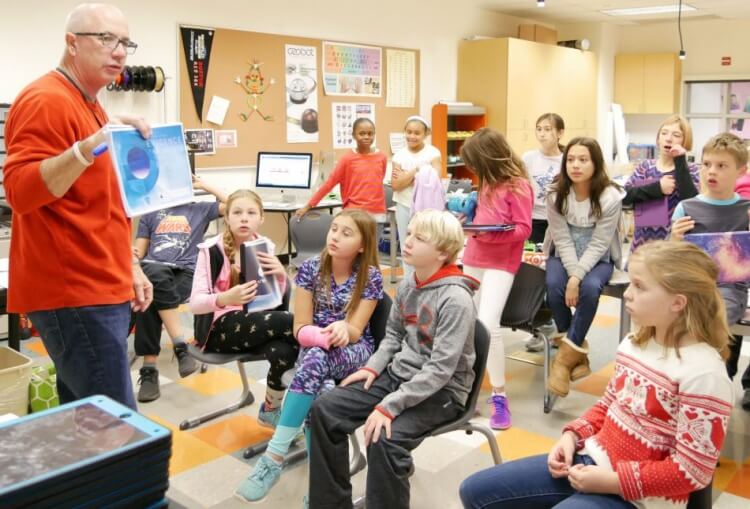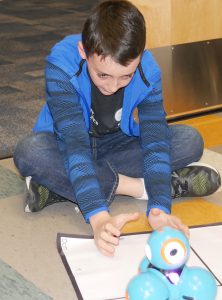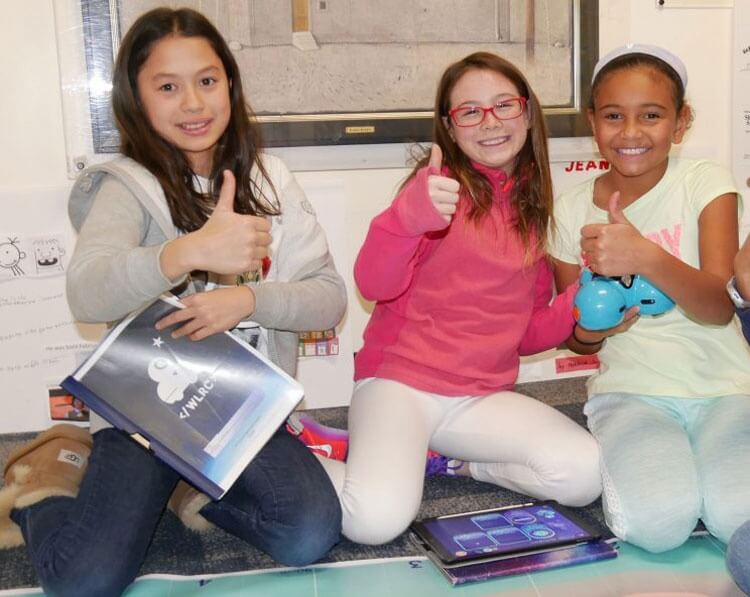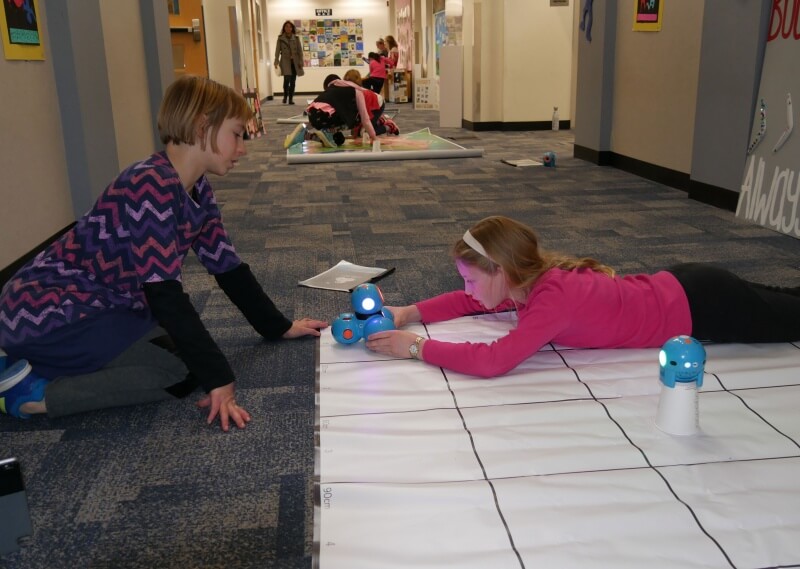If you thought team sports at Colorado Academy were confined to the basketball court or soccer field, you haven’t met the fifth graders participating in the international Wonder League Robotics Competition. Spend 45 minutes with them, and you will see how coding is becoming the new CA team sport for future tech leaders and innovators.
‘Learn from failure, persevere, and succeed’
Starting in October, Lower School Technology Coordinator Bill Witt put out the call for volunteers to form this year’s Wonder League teams. Last year, CA fielded four teams, one of which finished in the top 30 teams out of 5,500 teams competing from around the world.
This year, enough students came out to create seven CA teams. Each team works with one Dash and one Dot robot, one programming device, and a practice surface of about five feet by eight feet. The CA teams give up their lunch recess at least once during each six-day rotation to tackle the coding challenges, spreading out in the hall outside the Lower School iLab.

Witt spent several weeks training students on how to program Dash and Dot. But after that initial training, his role is confined to reminders of the rules and requirements for the Wonder League competition. “A lot of times students are stuck, and I know the answer, but they won’t hear me say it because I am not allowed to help them,” he says. “That’s the Wonder League rule, and it’s consistent with the CA philosophy allowing kids to learn from failure, persevere, and succeed.”
‘It involves your imagination’
Henni Heinrich and Gianna Lish are tackling the first Wonder League mission called “Challenge_One,” in which Dash is cast as an international cosmonaut, exploring every square centimeter of a space island without falling off the island or disturbing two of its residents in fixed positions. Spread out on the floor, both girls are engrossed in their efforts to successfully program Dash, the robot. “It’s all about problem-solving,” says Henni. “It feels rewarding when he does the right thing, and we can move on,” adds Gianna.

Next to them, Carter Maloy is working on another team. “Personally, I really like coding,” he confesses. “It’s fun to estimate distances with a computer and cool when you can control what a robot does.” CA students might start coding as early as Pre-Kindergarten, so by fifth grade there is nothing mysterious about it.
“It involves your imagination,” says Kyle Manzo, as he launches Dash on another venture. “You have to be creative with the code.”
‘Perseverance and grit’
Wonder League teams must successfully complete three story-based missions, each presenting a new coding challenge. In the second mission, the teams must program Dash to locate “space junk” and bulldoze it into a “collection zone” on the island without disturbing the island inhabitants. Each challenge becomes incrementally more complex for the young coders. “Coding is totally logical, sequential thinking,” Witt says. “Wonder League demands teamwork, collaboration and problem solving—lots of perseverance and grit.”
Unlike sports teams which may travel to compete, Wonder League teams qualify by submitting proof of performance online—sending in either the code used to program the robots, a video of the successful challenge, or a planning document. All three challenges are due by mid-February; top performers will be eligible for the Spring 2018 Invitational Round.

Since the Wonder League Robotics Competition started two years ago, it has reached more than 24,000 kids, inspiring an early love of coding, computer science, and STEM education. Last year’s grand prize winners for ages 9-12 was an all-girls team from Hartland, Michigan called “The Pink Eagles,” so it’s perhaps no surprise that this year’s CA teams are dominated by fifth-grade girls. “We are determined to do better than last year’s team,” says Gianna as she tweaks the code one more time.
